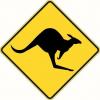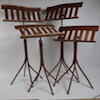So i'm a poor college student and I have decided to splurge and buy a good hand plane when the weather starts to get warmer. I'm going to get the wood river 5 1/2 from wood craft. I have watched a million videos on you tube on how to sharpen. Every one has a their favorite way to sharpen. i'm looking for suggestions on the best way to sharpen not only that but specific products. I'm looking for something that is quick, easy, cost efficient, and long lasting. thanks for all the suggestions.




 Reply With Quote
Reply With Quote






 ) you can invest in a real quality North American made plane like Lie Nielsen or Veritas.
) you can invest in a real quality North American made plane like Lie Nielsen or Veritas. 
